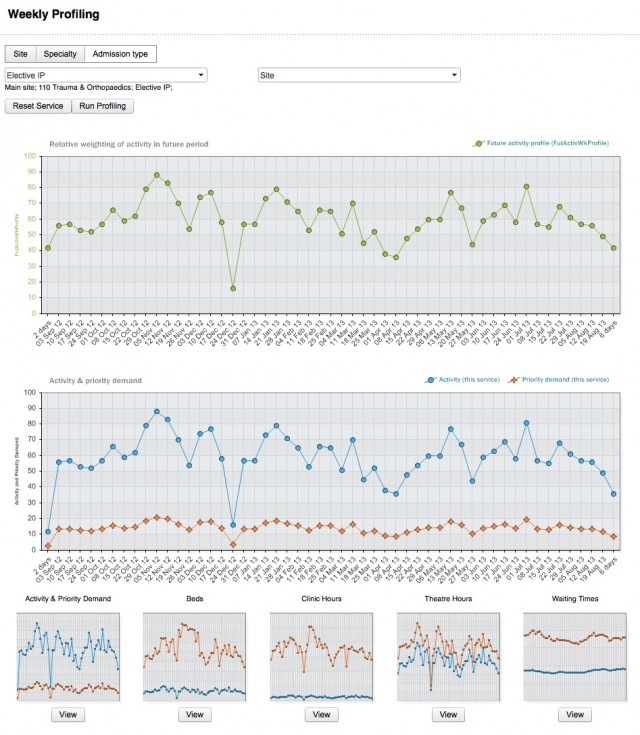You drew up your winter plans over the summer holidays, of course.
For the coldest months, you’ll have a planned reduction in surgical beds to allow medical beds to expand. Anticipating that, you are now halfway through reducing your inpatient waiting lists, to give them enough headroom to rise safely during the winter peak without breaching the targets. And you’ve planned extra daycase and outpatient sessions for the New Year, to keep the surgeons busy while elective inpatients are scaled back.
Even though you’ve planned this carefully, you know that every winter is a bit different. Nobody knows when flu or norovirus might strike, or whether spring will finally arrive in March or May. So you monitor progress every week, to see whether activity and the size of waiting list are on track for the time of year, and whether demand is running hotter than expected. That way you’ll get maximum notice of trouble ahead, and buy a few precious weeks to sort things out before they get serious.
Is that how it is? Or is your winter planning a bit more, um, informal? Perhaps the waiting list isn’t shrinking right now, and you may have to attempt a backlog clearance in February or March? Perhaps your plans for the rest of the year are based on straight-line trajectories, rather than seasonal variations, so that winter isn’t actually factored in at all?
If that’s the case, it won’t be for lack of trying. Most hospitals do their capacity planning in a spreadsheet, and those spreadsheets get big and complex really quickly. And that’s just to plan the rest of the year in one big lump; if you want to break the plan down week by week, then the whole effort is multiplied by however many weeks there are and it’s just impossible. So, with a shrug, a straight-line trajectory is produced and that’s the plan.
But it doesn’t need to be like that. In Gooroo Planner you can turn your whole-period plans into week-by-week ones with just one click. And it’s visual, like this: (can you spot Christmas?)
So an analyst can flood Gooroo Planner with standard data, then share it with operational managers, giving them the option to edit the master copy. By clicking the green chart, managers can replan their work around the winter peak, all the time keeping an eye on total beds and theatres to make sure they’re OK across the hospital. Nobody even has to collate everybody’s responses, because they’re all working on the same model.
The planning nirvana described at the top might have sounded implausible. But it isn’t. This is real, and it’s available now. Welcome to winter planning with Gooroo Planner. Drop us a line, and we’ll be happy to show you more: [email protected]
UPDATE: in 2016 we introduced constant capacity modelling that replans elective work around the peaks and troughs for you, so you don’t need to click the green chart… and you can also automate the whole process so that analysts don’t even need to load the data, run the report, or manually share the results.

